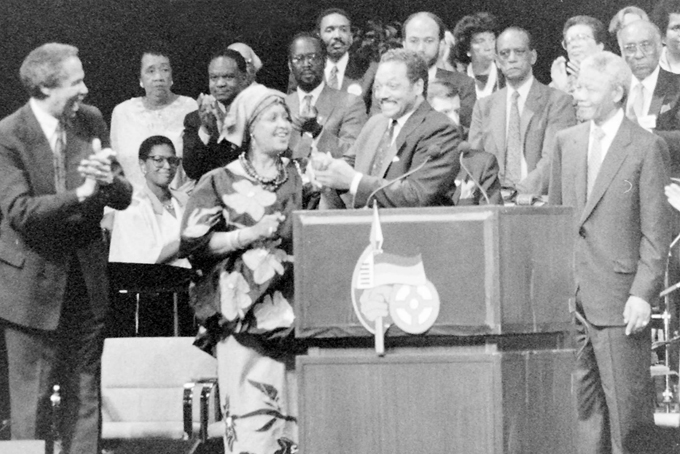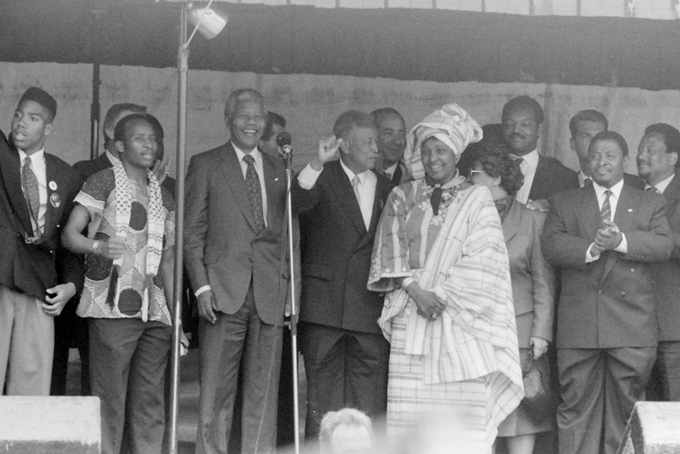
WASHINGTON (NNPA) – Nearly three decades ago, a handful of prominent Black activists began organizing a movement that would eventually help break the back of apartheid in South Africa and force the U.S. government and American companies to end their support of White minority rule on the continent.
What was called the Free South Africa Movement began on Thanksgiving Day 1984, when then-U.S. Civil Rights Commissioner Mary Frances Berry, TransAfrica executive director Randall Robinson, then-D.C. Congressman Walter Fauntroy, and current-D.C. Delegate Eleanor Holmes Norton (then a law professor at Georgetown University), were granted a meeting at the South African Embassy in Washington, D.C.
The group called for an end to apartheid and the release of all political prisoners in South Africa. When their demands were ignored, the activists staged a sit-in at the South African embassy on Massachusetts Avenue, N.W.
All but Norton were arrested for trespassing, and their actions made national, then international news.
“There were already protests before, but no one got any momentum,” Berry recalls. “We wanted to get arrested. And we tried to get people lined up to get arrested the next day.”
They got arrested the next day, the day after that and the following day. In fact, every day for a year, the Free South Africa Movement held demonstrations at the South African Embassy in Washington, D.C.

The nascent movement attracted support from celebrities, members of Congress and other high-profile people, many of whom joined the protest and allowed themselves to be arrested in order to draw more attention to the issue. Before long, chapters of Free South Africa sprang up across the United States.
“Let us not forget that Britain, the U.S. and all of the western powers labeled Mandela a terrorist and steadfastly propped up the apartheid regime—they were on the wrong side of history,” says civil rights leader Jesse Jackson. Mandela is not gone, he remains with us always. He’ll always be a chin bar to pull up on. He has left this earth, but he soars high among the heavens, and his eloquent call for freedom and equality is still heard among the winds and rains, and in the hearts of the people the world over.”
Mary Frances Berry, a professor of history at the University of Pennsylvania, remembers the personal side of Mandela.